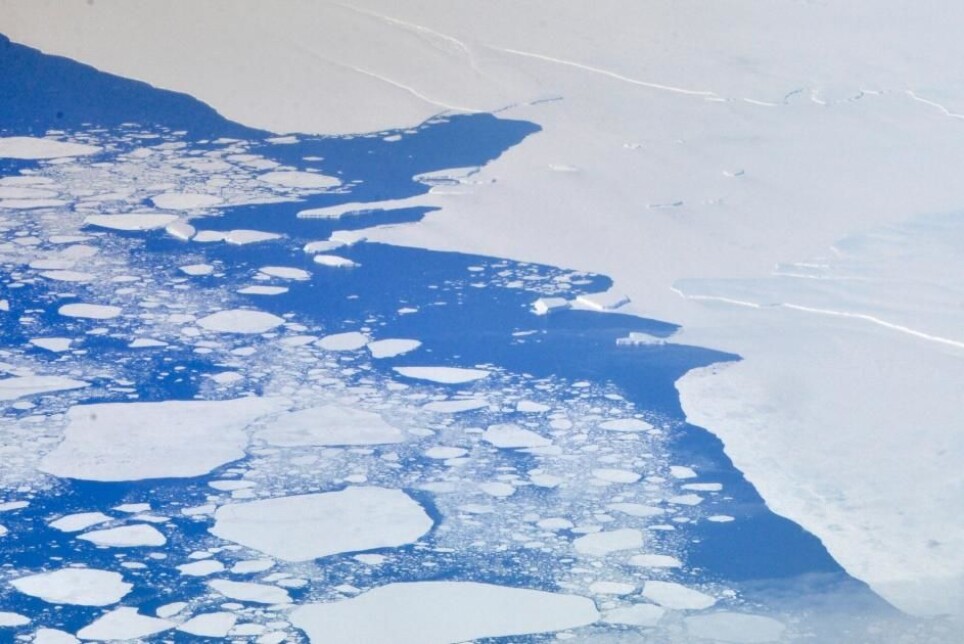THIS ARTICLE/PRESS RELEASE IS PAID FOR AND PRESENTED BY University of Oslo - read more

Sea level rise from melting ice could be halved this century
That is, if we meet the Paris Agreement target of limiting warming to 1.5 degrees Celsius. “Human action matters,” says Professor Regine Hock.
Researchers from all over the world have collaborated to make better predictions of sea level rise towards the year 2100.
“Global sea level will continue to rise, even if we halt all emissions now, but our research suggests we could limit the damage,” says Tamsin Edwards of King’s College London.
She has been leading a study that explores the land ice contribution to sea level in the 21st century arising from the world’s glaciers and the Greenland and Antarctic ice sheets. The study is published today in the journal Nature.
The study predicts that sea level rise from the melting of ice could be halved this century if we meet the Paris Agreement target of limiting warming to 1.5 degrees Celsius.

“If pledges were far more ambitious, central predictions for sea level rise from melting ice would be reduced from 25 centimetres to 13 centimetres in 2100. This would mean a less severe increase in coastal flooding,” Edwards says in a press release.
A coordinated framework
Professor Regine Hock at the Department of Geosciences at the University of Oslo is among the more than 80 researchers who have contributed to the study.
“Before, different scientific groups around the world were doing projections, but they were not comparable and everybody was doing it a little bit differently,” Hock says to Titan.uio.no.
Communities studying the ice sheets on Greenland and in Antarctica and communities studying the more than 200.000 glaciers around the world have now joined forces.
“The worldwide community have organized and tries to have a coordinated framework to do these projections in a standardized way,” Hock says.
According to Edwards, they have used a larger and more sophisticated set of climate and ice models than ever before. Nearly 900 simulations from 38 international groups have been combined in the study, and they have used statistical techniques to improve their understanding of uncertainty about the future.
Tremendous impact on storm floods
“The sea level is rising about 3.3 millimetres per year, one centimetre in three years,” Hock says.
“It might not sound very much, but 10 or 20 centimetres is a lot and the sea level rise is not globally uniform. There will be regions where it is less and there will be regions where it is more.”
Another important aspect is the storm floods.
“While mean sea level increase is important, what matters most is the extremes that follows this increase. If the ocean is 10 or 20 centimetres higher, it has a tremendous impact on the frequency and maximum of storm floods. And that will impact many people around the world,” Hock says.
More than half of the sea level rise comes from melting ice and the rest is from the expansion of the ocean due to warmer ocean temperatures.
“The contribution of melting ice have been increasing over the last decades. Even if we stop all emissions today, there is a committed loss. Glaciers will continue to contribute because they are reacting to emissions decades ago,” Hock says.
Antarctica is the big unknown
The enormous amounts of ice in Antarctica is a challenge for the scientists making projections.
“Antarctica is the 'wildcard' of sea level rise. It is difficult to predict, and critical for the upper end of projections,” Edwards says.
They know much about the other glaciers around the world, and they are much easier to model.
“In Antarctica almost all glaciers end up in the sea, so it’s not only air temperature but also ocean temperature that effect the melting. Most of the melting occurs under water, and this is much more difficult to simulate and to project,” Hock says.
“The main focus now is the potential collapse of the West Antarctic Ice Sheet. This is the big unknown,” Hock says.
Human action matters
Last week, another study established that the world's glaciers are shrinking faster than 20 years ago. These findings are now entering the models of Hock and her colleagues in order to make even better predictions.
“We are now making new projections, calibrating our models with their analysis. This is exactly what we need. We need the assessments from the past to calibrate our models. Right now we are rerunning the projections with these new data that came out last week,” Hock says.
All this will be included in the next report from the UN's Intergovernmental Panel on Climate Change (IPCC), and will thus be visible and accessible to politicians and decision-makers.
“We can only hope that they listen to us and base their decisions on science. These numbers go into the next IPCC report published by the end of the year.”
“Human action matters. There is definitely something we can do,” Hock says.
Reference:
Tamsin L. Edwards et.al.: Projected land ice contributions to twenty-first-century sea level rise. Nature, 2021. (Summary)
See more content from the University of Oslo:
-
Putin’s dream of the perfect family
-
How international standards are transforming the world
-
A researcher has listened to 480 versions of Hitler's favourite music. This is what he found
-
Researcher: "AI weakens our judgement"
-
New, worrying trend among incels, according to researcher
-
Ship’s logs have shaped our understanding of the sea





































